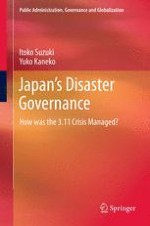Abstract
Natural disasters are often multifaceted and cause severe accidents. Disasters initiated locally can become national and even global crises. Disasters always occur and must be managed. Today’s world needs a constantly renewed body of knowledge and techniques (UN-ISDR 2005; Farazmand 2001; Waugh 2000; Wise 2006, etc.) for the preparedness and response to disaster reduction. Central to such a body of knowledge are disaster preparedness, emergency, and crisis management systems of government, of which capacity building is becoming an increasingly important element in public administration, management, and governance (UN-DESA 2001; UN-ISDR, Hyogo Framework 2005b; Farazmand 2007, pp. 149–159, 2009, pp. 391–412, and 2012 forthcoming). In the past, big disasters or crises tended to be left as the manifestations of “unness” (Hewitt 1983, et al.), such as unprecedented, unexpected, unforeseen, and unmanageable. However, nowadays disasters are not to be left to these “unness” but to be managed by effective, transparent, and accountable governance, locally, nationally, and globally, from all their phases of preparedness, prevention, risk reduction, and mitigation, and when occurred, by emergency responses for relief and recovery, and reconstruction posto disaster. During all these phases, government plays the most important role involving other stakeholders of the disaster governance, with the ultimate aim of people’s safety to be secured.
